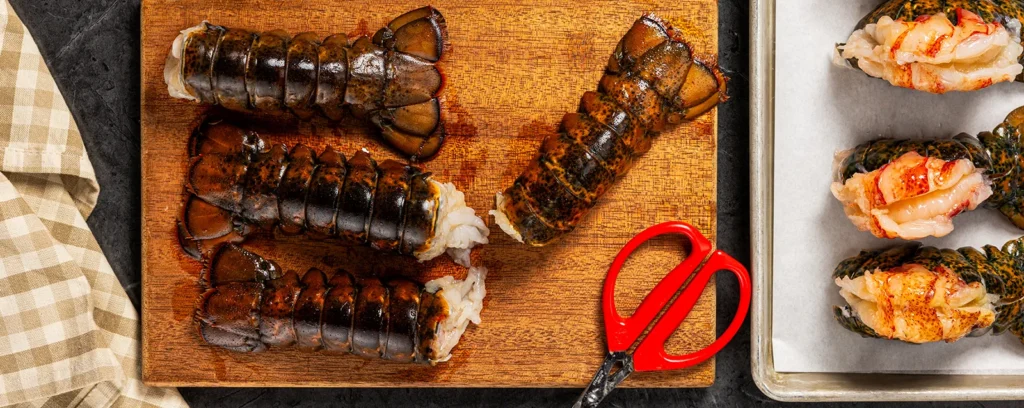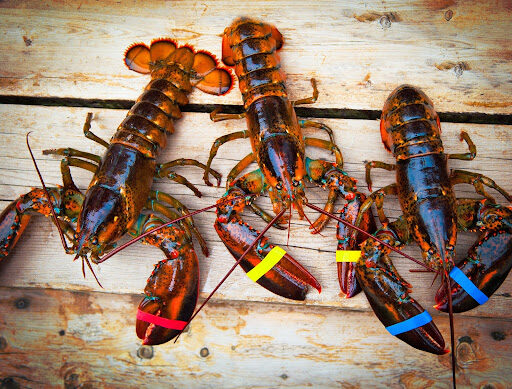
Lobster Fishermen and Right Whales
There hasn’t been a single right whale entanglement in Maine waters in nearly two decades, despite the deployment of over 3 million lobster traps each year
The Maine lobster industry has become a central point of discussion in ongoing environmental debates, often revolving around the North Atlantic right whale (NARW), one of the world’s most critically endangered large whale species, with a population of only a few hundred. The NARW can reach lengths of up to 55 feet and weigh as much as 70 tons, and are known for their distinctive lack of a dorsal fin and the presence of roughened skin patches called callosities on their heads.
It’s worth highlighting that right whales primarily inhabit depths of approximately 100 to 150 meters, where they find their main source of sustenance—abundant zooplankton and other tiny organisms. Conversely, many Maine lobstermen operate in shallower waters, ranging from 1 to 300 feet, which lie well outside the typical habitat of right whales.
While there have been ongoing debates regarding the impact of lobster fishing on right whale populations, it’s important to note that concrete evidence linking the two remains elusive. Maine’s lobster industry has a rich history of sustainability efforts, with no substantial evidence tying it to harm against right whales. Over the past 150 years, Maine’s lobster industry has actively pursued sustainability practices, contributing to the overall health of Maine’s coastal ecosystem.
Maine lobstermen have consistently gone above and beyond mandated safety regulations, proactively implementing their own measures, continuously enhancing sustainability practices, and demonstrating a steadfast commitment to the longevity of the ecosystem.
Over the last decade, there have been ongoing regulatory changes and court rulings, leading to uncertainty and tension within the industry. In addition, environmental organizations and advocates for the North Atlantic right whale have filed lawsuits against the government, arguing for more extensive protection measures. The Maine lobster industry has contested these lawsuits, and recently prevailed. In the past year, Maine lobster gear has been largely absolved of blame for right whale deaths.
Despite these challenges, Maine lobstermen remain dedicated to both sustainability in the Gulf of Maine and securing a future for the next generation of lobstermen. One significant early effort to protect right whale populations involved implementing and continually improving “weak link” regulations. These regulations required lobster trap ropes to be designed to break more easily in the rare event of a whale entanglement. There hasn’t been a single right whale entanglement in Maine waters in nearly two decades, despite the deployment of over 3 million traps each year (with approximately 4500 lobstermen, each allowed around 800 lobster traps, depending on their fishing location).
Here are 5 other ways that Maine lobster fishing stands as a prime example of sustainability:
Traditional Traps and Escape Vents: Lobstermen use traditional traps equipped with escape vents designed to allow undersized lobsters to exit freely. Additionally, these traps are fitted with biodegradable escape hatches, ensuring that lobsters can escape in the event a trap becomes lost.
Size Limits for Lobsters: Lobsters are subject to size limits based on the length of their carapaces rather than their overall size. Lobsters with carapaces smaller than three and a quarter inches cannot be harvested, while those exceeding five inches are also protected to safeguard the larger breeding stock. Female lobsters carrying visible eggs are also off-limits for harvesting. These protective measures help maintain a healthy lobster population.
Opposition to Ocean Floor Dragging: The lobster community has actively opposed legislation that would permit dragging the ocean floor for lobsters, as it is seen as potentially harmful to Maine’s marine environment. This reflects their commitment to protecting their coastal waters and ecosystems.
- Economic Incentives and Diversification: Beyond their commitment to environmental stewardship, Maine lobstermen also have economic motivations to protect their resources. Many lobstermen engage in diverse fishing activities throughout the year. For example, some, like ShopLobster’s founder Nick Perreault, participate in scallop dragging from December to late February and elver fishing from mid-March to mid-April, alongside lobstering. This diversification helps maintain economic stability and ensures responsible resource management.
Flexibility in Lobster Fishing: Unlike some other fisheries, Maine lobstering lacks strict start and end dates. Each lobsterman has the autonomy to decide when to fish, providing a higher degree of freedom and allowing for varied harvesting throughout the year. This flexibility contributes to the sustainable management of lobster populations while accommodating the needs of lobstermen.
What factors are impacting the North Atlantic Right Whale?
Pinpointing the exact cause of the decline in the right whale population is an extremely challenging task. This underscores the probability that multiple factors are at play. For example, the lobster industry in Maine has frequently been accused of causing this decline, even when concrete evidence is lacking. The sheer complexity of potential causes and the absence of definitive answers make it convenient to point fingers at the lobster industry as the responsible party.
To truly identify the culprits, it’s important to cast a wide net and examine various potential leading causes. Among these, the overarching issue of global warming and broader environmental changes looms large, impacting not only the right whale but also a multitude of other marine species.
The escalation of ocean temperatures has had far-reaching consequences for the right whale and its ecosystem. As a type of baleen whale, they rely on filtering substantial volumes of water through their baleen plates to capture minuscule sea creatures, typically copepods. These tiny organisms, being highly sensitive to even slight environmental shifts, have seen their ideal habitats altered due to rising water temperatures. Because of this, the right whale now faces unprecedented scarcity in its food sources and sustenance.
Even when sufficient food is found, other challenges arise. According to the Bureau of Ocean Energy Management (BOEM), alongside water temperature and food availability, heightened ocean noise ranks as a significant contributing factor. The modern seascape is filled with sources of noise that may not have existed decades ago, perplexing these amazing creatures, and disrupting their usual behaviors.
Large vessels, drilling operations, and notably, offshore wind energy installations generate substantial underwater noise, which can propagate over vast distances. Even the vibrations from wind turbines farther offshore can reach individual right whales, diverting them from their customary territories. While this might not immediately appear as a substantial issue, the already precarious environment of the right whale renders them exceptionally vulnerable to such disruptions. Once displaced, they can become disoriented, compromising their ability to navigate safely, locate sustenance, and communicate effectively with their fellow individuals. This can sometimes then lead them directly into the paths of ships that were initially rerouted to avoid large species like right whales.
Filter out the distractions and support Maine’s family fishing businesses.
In addressing complex issues like this, it’s crucial to approach the discussion with a comprehensive understanding of all available facts. Unfortunately, there is a substantial amount of misinformation circulating online, even from usually reliable sources. This is likely because of the incredibly complex and nuanced nature of the issue.
Certain other industries, as mentioned earlier, have often received preferential treatment when it comes to finding solutions to problems related to right whale conservation. These industries, owned by some of the world’s largest corporations, such as energy companies and shipping conglomerates, have enjoyed the benefits of relatively unrestricted operation. In contrast, the small business and fishing operations that make up the lobster industry have faced penalties and scrutiny. The fishing industry in the United States has nearly 14,000 regulations, more than most other industries – including shipping.
This situation not only adversely affects the coastal economies of Maine and makes it increasingly challenging for lobstermen to sustain their livelihoods but also has ripple effects across various components of Maine’s coastal economies. It is paramount not only to assign blame accurately but also to ensure that those responsible are held accountable for implementing action plans to improve their environmental impact.
Supporting the fishing industry in Maine and advocating for the concerns of those genuinely dedicated to right whale conservation and the well-being of coastal economies involves several steps. One effective approach is to support privately owned fishing operations and purchase from fisheries that prioritize sustainable and responsible fishing practices. Additionally, it’s vital to seek comprehensive and unbiased research when educating oneself about right whales and conservation, ensuring that the information provides a well-rounded perspective, rather than solely reflecting the interests of corporations seeking to maintain the status quo without considering the repercussions.
Full steam ahead.
Despite the various reports from a bunch of sources, the exact primary cause of the right whale population crisis remains unclear. Even identifying a collective group or organization to blame is a complex challenge. Instead of searching for a scapegoat within Maine’s lobster industry, it’s imperative to allocate resources towards conservation efforts and ongoing enhancements in areas that can truly make a difference.
At ShopLobster, we firmly believe in the interdependence of the marine ecosystem in Maine’s coastal waters and the health of its coastal economies and industries. While concerns for the right whale are entirely justified, excessive regulation of the lobster industry isn’t the right answer. Striking a balance that allows both Maine’s lobstering industry and the shared ecosystem with the right whale to flourish is of paramount importance.
When sourcing our lobster, we exclusively collaborate with small lobstering businesses that exhibit a steadfast commitment to sustainable practices and overall compliance with the best sustainability standards. Furthermore, one of the most effective ways to foster environmental awareness and appreciation for Maine’s diverse coastal ecosystem is through education.
When indulging in the freshest Maine lobster, delivered live right to your doorstep, remember the care and dedication of the lobstermen who played a role in bringing it to your table, and that will surely enhance your dining experience. To delve deeper into our dedication to sustainability or explore the wide array of live and frozen lobster options we offer, we invite you to visit our shop today!





